Blog 12/19/2020 - Battle of the Bulge – Ardennes Forest, Belgium
MHT Blog December 19, 2020 - Battle of the Bulge – Ardennes Forest, Belgium
“German Special Operations”
MHT's Battle of the Bulge Coverage begins with the failed Wehrmacht Special Operations versus the US 1st Army. Operation Stösser (Operation Hawk) was a paratroop drop into the American rear in the High Fens area during the German Ardennes Offensive in World War II. Its objective was to take and hold the crucial crossroads at Belle Croix Jalhay 12 miles North of Malmedy until the arrival of the 12th SS Panzer Division on the 18 December.
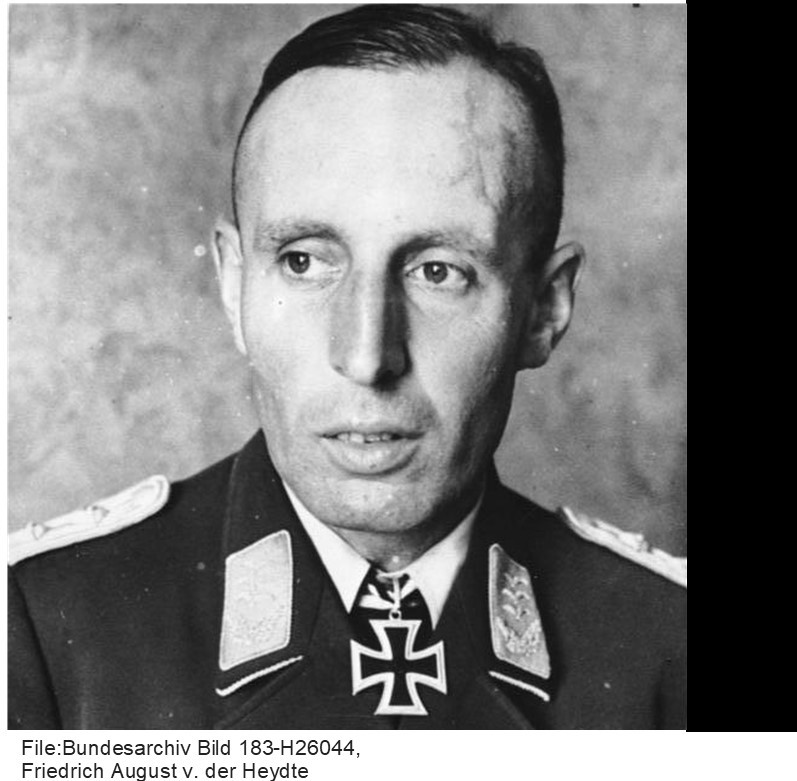
The operation was led by Oberst (Colonel) Freiherr Friedrich August Freiherr von der Heydte. Heydte was an experienced Fallschirmjäger (paratrooper) Commander having led a battalion during the Battle of Crete. On 8 December, he was told to prepare for a mission. He wanted to use his own highly trained regiment, but this was forbidden because its movement might alert the Allies to the impending offensive. Instead, he was provided with a Kampfgruppe of 800 men. The German II Parachute Corps was tasked with contributing 100 men from each of its regiments. Instead of contributing their best men as ordered, the regiments dumped their misfits and troublemakers. The unit only competent small units were 150 men from Heydte's own unit, the 6th Parachute Regiment, in loyalty to their commander, disobeyed orders and joined him.
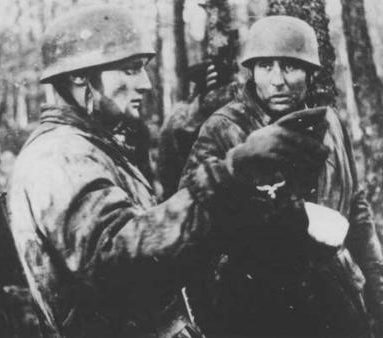
On 13 December, Heydte visited Field Marshal Model's Army Group B Headquarters to complain that the resources allocated to him for the operation were wholly inadequate. Model who had tried to persuade Hitler to attempt a less ambitious counterattack, replied that he gave the entire Ardennes Offensive less than a 10% chance of succeeding but was told it was necessary to make the attempt as Model said, "It must be done because this offensive is the last chance to conclude the war favorably."
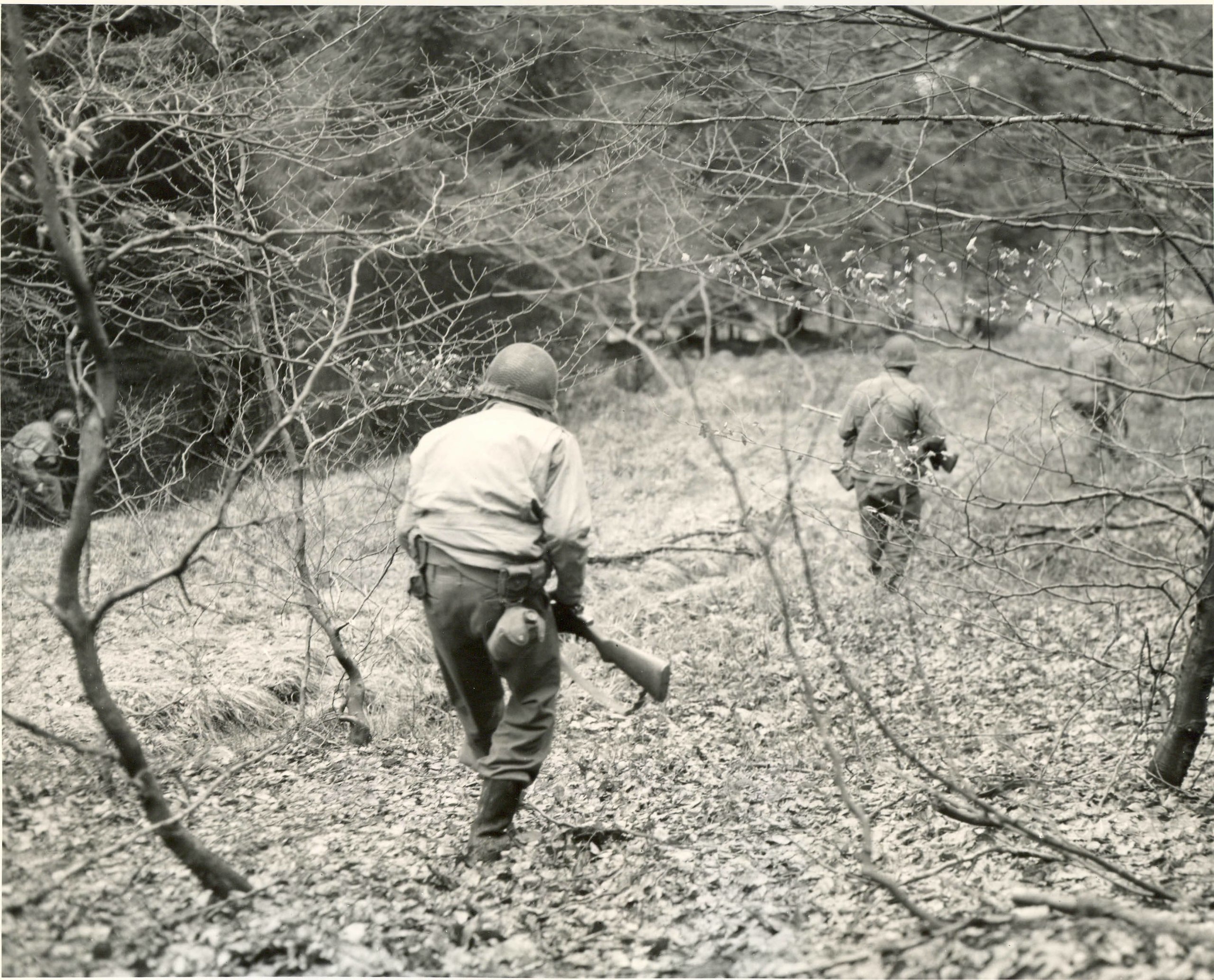
At midnight on 17 December, 112 Ju 52 transport planes with undertrained and inexperienced pilots flew with 1,300 paratroops took off during a powerful snowstorm with strong winds resulted in paratroopers dropped all over some behind the German lines and some not at all. Only 300 made it into the drop zone but the spread of enemy all over made the 1st Army use the 18th Infantry Regiment (3,000 men) along with an armored combat command of 300 tanks and 2,000 soldiers search for several days looking for a phantom German Fallschirmjäger Division. Heydte rounded up 300 paratroopers near Porfays and awaited the 12th SS Panzer Division that never arrived as it was defeated by the US Army units at the Battle of Elsenborn Ridge.
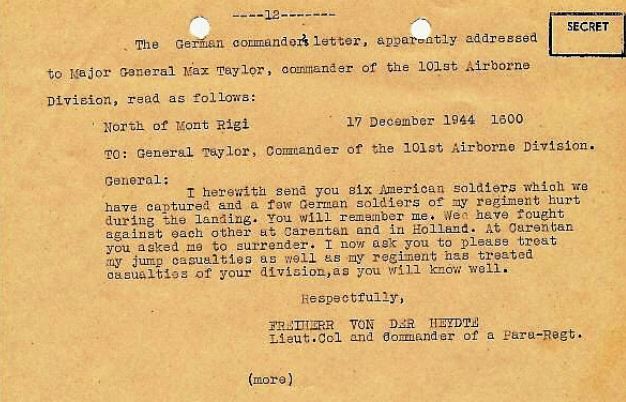
Realizing he was cut off, without supplies or adequate ammunition and pursued by the 18th Infantry, Heydte ordered his men to break through the Allied lines and only 100 reached the German lines. Heydte surrendered on December 23 and was held as a prisoner of war in England until July 1947.
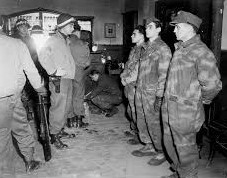
The operation was a failure as many of the Fallschirmjäger assigned to Heydte had never jumped out of an airplane before and he later commented, "Never in my entire career had I been in command of a unit with less fighting spirit." The operation did succeed in tying down soldiers and vehicles who searched in vain for the reported large unit of paratroopers rather than reinforce the lines where they were needed. MHT walks the ground in the Bulge twice in 2021. https://www.miltours.com/index.php?route=product/product&path=17&product_id=116
The second covert operation during the Battle of the Bulge was Operation Greif (Griffin) a special operation commanded by Waffen-SS commando Otto Skorzeny who had rescued Mussolini in September 1943. The operation was the brainchild of Adolf Hitler, and its purpose was to capture one or more of the bridges over the Meuse river before they could be destroyed. German soldiers, wearing captured British and U.S. Army uniforms and able to speak English using captured Allied vehicles, were to cause confusion in the rear of the Allied lines. A lack of language proficiency, vehicles, uniforms and equipment limited the operation and it never achieved its original aim of securing any of the Meuse bridges.
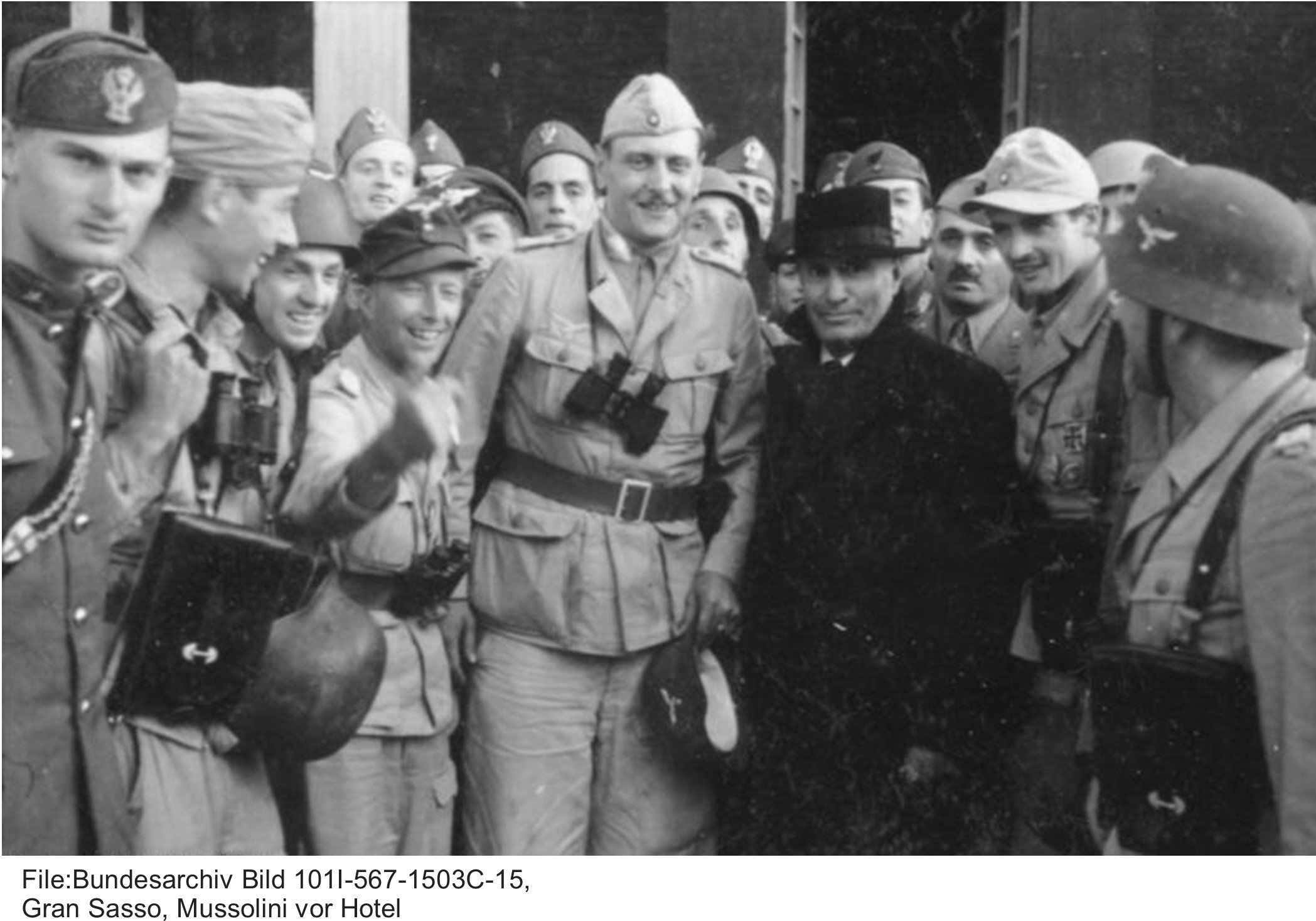
Skorzeny created Panzer Brigade 150 of 2,500 to look like a U.S. Army unit and was to follow the breakthrough by the 6th Panzer Army and then push ahead to the bridges through the crossroads held by Heydte's Fallschirmjägers. However, when the 1st SS Panzer Division failed to breakthrough, Skorzeny realized that Operation Greif's initial aims were now doomed. As a consequence, on 17 December Skorzeny attended a staff conference at the 6th Panzer Army's HQ and suggested that his brigade be used as a normal Wehrmacht unit. This was agreed upon, so on 21 December his brigade tried to take Malmedy. Skorzeny brigade's assaults were successfully repelled by the U.S. defenders. This would constitute the only noticeable attempt from the Germans to take Malmedy during the Battle of the Bulge.
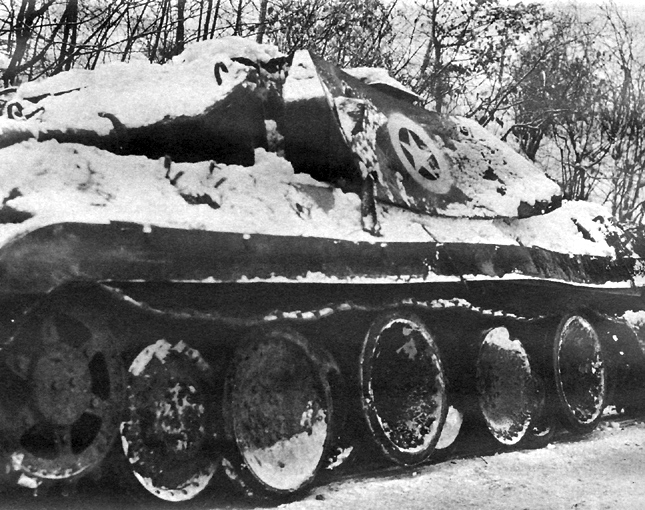
The "Einheit Stielau" Commando Unit had been assembled from the brigade's best English speakers, but few of them had much if any experience of undercover operations or sabotage. They were given limited training in demolition and radio skills, studied U.S. Army organization and ranks and some were sent to POW camps to refresh their language skills through contact with U.S. POWs. Dressed in U.S. Army uniforms (the highest rank used was that of a colonel), armed with U.S. weapons, and using U.S. jeeps, the commandos were given three missions:
1) Demolition squads of five or six men were to destroy bridges, ammunition dumps, and fuel stores.
2) Reconnaissance patrols of three or four men were to reconnoiter on both sides of the Meuse river and also pass on bogus orders to any U.S. units they met, reverse road signs, remove minefield warnings, and cordon off roads with warnings of nonexistent mines.
3) Work closely with the attacking units to disrupt the U.S. chain of command by destroying field telephone wires and radio stations, and issuing false orders
Skorzeny described the major successes as one commando team entered Malmedy and another team managed to persuade a U.S. Army unit to withdraw from Poteau on 16 December, while another team switched around road signs that sent an entire U.S. regiment in the wrong direction. The psychological damage was greater even LtGen Patton was alarmed describing the situation to Gen Eisenhower as "Krauts...speaking perfect English...raising hell, cutting wires, turning road signs around, spooking whole divisions, and shoving a bulge into our defenses."
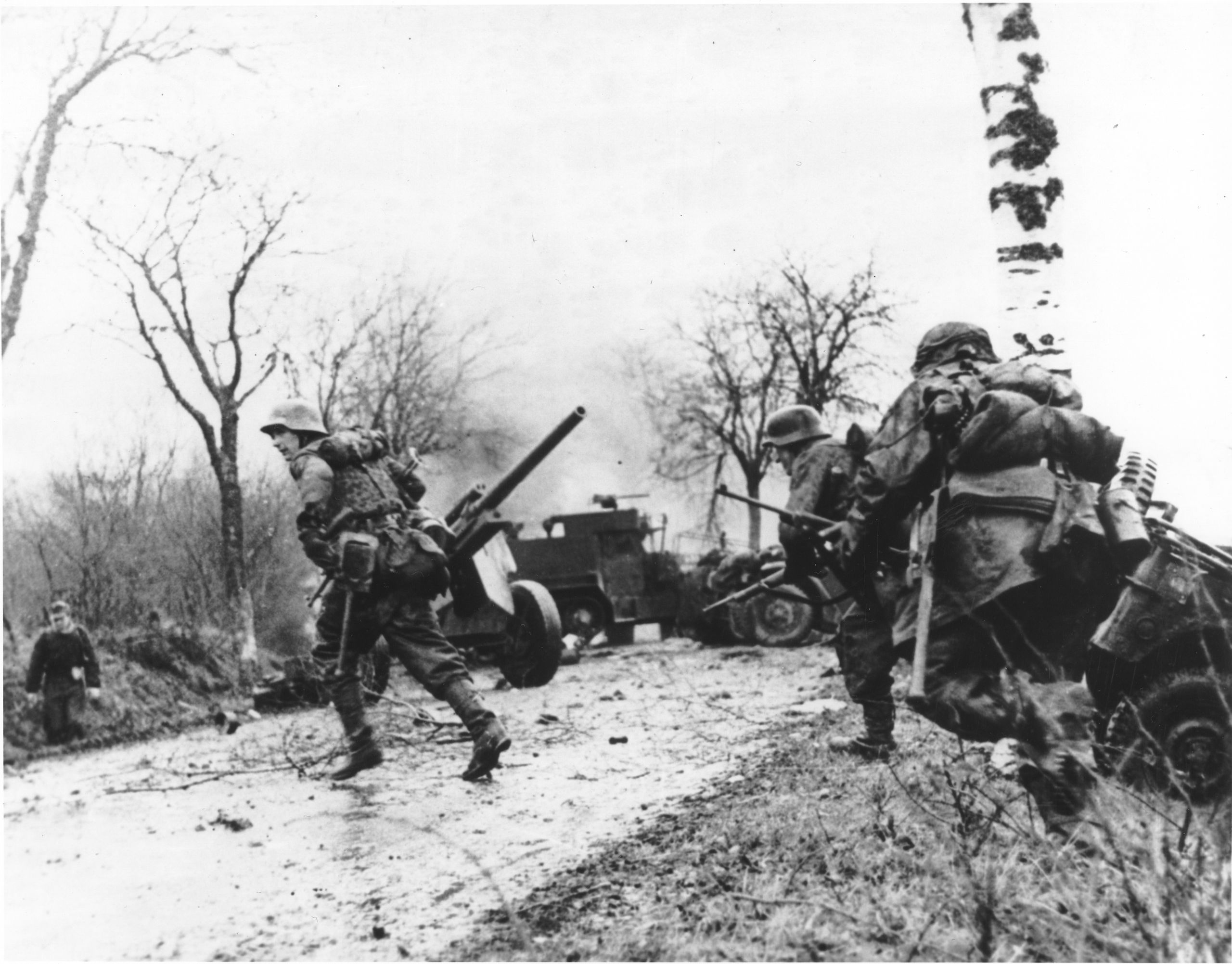
As a result, U.S. soldiers began asking other soldiers questions that they felt only Americans could answer in order to flush out the German infiltrators, which included naming certain state capitals, sports and trivia questions. This new protocol resulted in U.S. BGen Clarke being held at gunpoint for some time after he incorrectly said the Chicago Cubs were in the American League and a Captain spending a week in detenti
